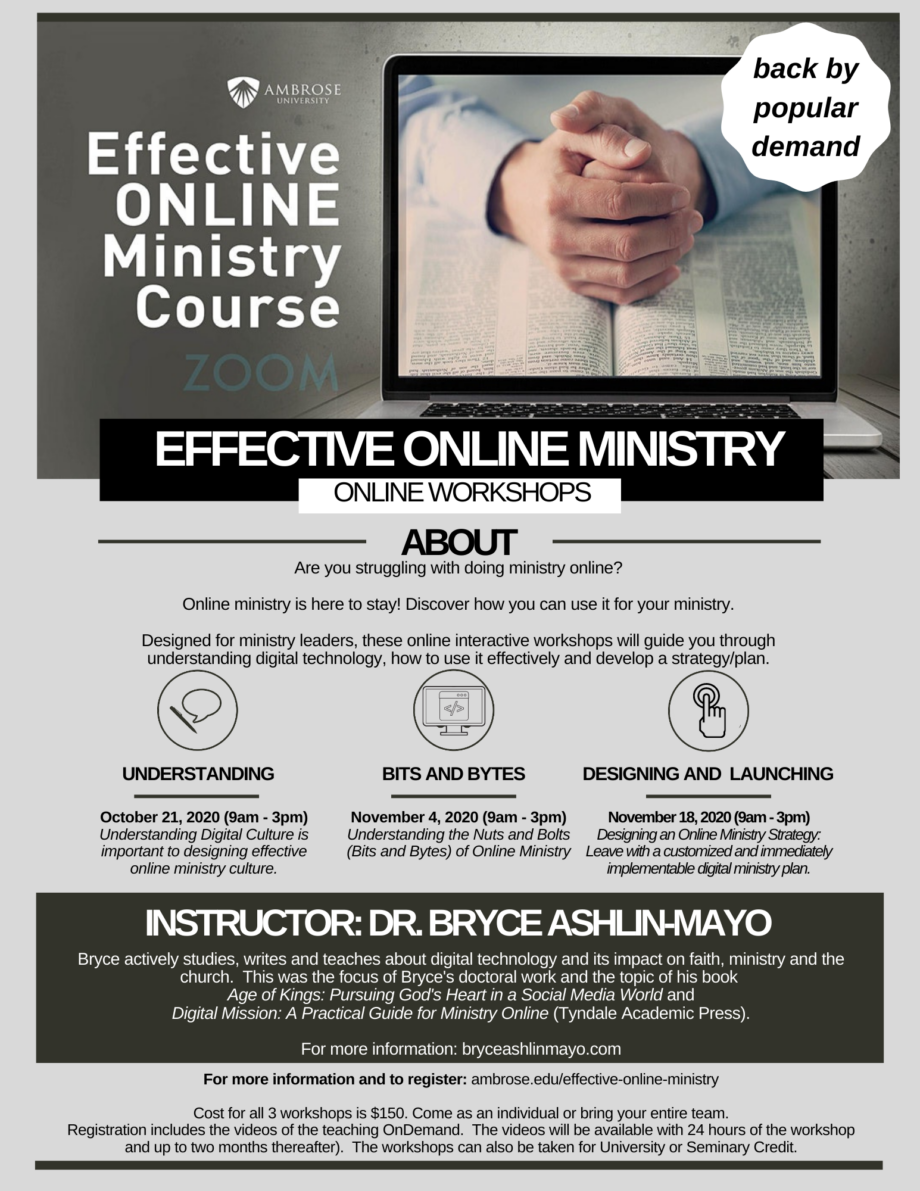There is no doubt that 2020 was a difficult year. It was difficult for many including those in pastoral leadership. In fact, it was probably the most difficult year of your pastoral career (I know it was mine).
As we enter 2021, there is an overall sense of optimism that we have turned the corner on 2020 and that things will be going back to “normal” soon. I share that optimism, but I also want to offer a dose (maybe stronger than you would like) of realism.
I sense many of my pastoral colleagues have entered the New Year with a blinded optimism that with a New Year and a vaccine roll-out that things will be back to our 2019 normal soon. As a result, there is a sense that if we can just hold on for a bit longer, we will survive, and things will get back to “normal.” I fear this sentiment may be an easy pill to swallow, but it is more placebo than medicine.
The Bad News
I think 2021 may be more difficult than 2020. Although a new year brings optimism and vaccinations have started, we are still months and months away from getting to the other end of the virus. We will soon enter the third wave, and just as the second wave was void of all the romanticism of the first wave (the romanticism of learning a new instrument, growing closer as a family, eating healthier, etc.), the third wave will be viewed and lived with disdain (people are not just tired but exhausted and exhausted people make bad decisions). Conspiracies will grow in momentum (tired people want easy answers that affirm their desires). Divisions will grow and rage will amplify (when people are exasperated, they cease to listen). Brokenness will run rampant (marriages will fracture, addictions will rage, etc.). Consequently, the pastoral leadership challenge will not be on the practical front (how to effectively do online ministry or in-person services with restrictions – although these are very important) but on the people front when our brokenness bleeds out.
You may say, “that seems very pessimistic. The vaccines are out and within a few months we will all be vaccinated, and things will return to normal.” I want to challenge that on two fronts. First, the law of large numbers is real and the job of 50 million vaccinations in Canada is mammoth (75% of the population with two doses) it isn’t until the majority of people are vaccinated can we all stop wearing masks and social distancing.
For example, if you are in Alberta (with a population of 4.4 million), we need to get the vast majority of the population vaccinated (assuming they will want to which is a massive issue that is being fueled through fake news) to get to herd immunity, that means the government will need to give some 7 million shots (as it is a two-shot vaccine). Take out a calculator and do some quick math. For those who think we will back to normal by the Fall (September for example), this would mean that by July (it takes several weeks after the second dose for the vaccine to take effect), we would need to be vaccinating about 40,000 people/day beginning today. Today (January 4, 2021) in Alberta they vaccinated between 3,000 and 4,000 people (The Alberta government doesn’t plan on vaccinating the general public until September 2021). I am not trying to alarm you or disparage those in government or our health officials. This is a moon landing type operation. The speed of vaccinations is sure to accelerate but it is a massive task and one that will not be completed until close to the end of 2021 (at the earliest, assuming everything goes right, and people trust the science and take it). I hope I am wrong, and it is earlier, but this is a time for practical realism.
Secondly, if we are assuming that right after we reach herd immunity and vaccinations are done people are going back to a 2019 version of normal, we are mistaken. People will shop, watch movies, eat out, go to school, exercise, travel, and worship differently as a result of this. These things were on a 10–20-year trajectory of change; the change was just condensed into a year (no wonder we are exhausted). We need to acknowledge this and adapt. We ignore it at our peril.
My point is, sadly, we are NOT almost done with COVID. We are, if all goes very well, only halfway through this. You may not want to hear this. I know I don’t. But it is the truth and good leaders lead from a posture of truth and reality in order to lead forward with clarity and vision. To ignore the long-term nature of this is to ignore the health of your organization, team and personal well-being.
Take time to process this (it is something to grieve and grief takes time), pray (trust in Jesus), strategize/plan, and move forward with faith and hope. The reality is, this longer timeline with permanent implications will mean more change, longer rationing of resources, harder days ahead, more division and strife, etc. But it will also mean that we will discover new ways of doing ministry, get to the core of some of our long-ignored problems, be more innovative, collaborate more often, and, most importantly, discover that Jesus is, has always been and will always be, enough.
The Good News, finally!
The good news is (there is good news!), we know what to do. We have an idea of what online ministry looks like now (if you are wrestling with this, I wrote Digital Mission to help), we know how to do in-person ministry relatively safely (we have established protocols and routines), and we have everything we need to not just survive but thrive as the Church (most importantly the Holy Spirit who has not been isolating). Additionally, the virus is not as deadly as we once feared and with more time will come even more therapies, understanding, better mitigation, faster testing, etc. We will make it through this!
Most importantly, God is on the throne and faithful. Jesus will build His Church. These may seem like points from your last sermon, but they are points we get to live into and discover more fully in this long-hauled season.
This is also an opportunity to press into systemic change and lead forward in ways we may have been too timid before. Press in and see God do amazing things. This is the time to do the following with your church:
- Move your church away from an unhealthy Sunday-centric focus. We were good at this (even if it didn’t effectively make disciples) and the future will not be found here.
- Innovate digitally and see the many opportunities present online, not just the obstacles. Digital is here to stay (even if you don’t like it)!
- Make disciples. For the last several decades the Church has wrestled with how to make disciples and, although we know a disciple-making crisis was upon us, we did not make substantive changes that were needed. This is the time to reimagine disciple-making with the systemic paradigm-shifting change needed.
- Embrace evangelism – How are we sharing our faith in a Covid world? How are we equipping our people to be on mission at work, home, and play?
- Get lean – Church budgets per attendee has steadily increased for years. What if this season will force us to re-think budgets and ministry staffing structures in new and creative ways?
Although this season may be devastating for churches and church leaders who refuse to adapt and change, I am convinced that it also holds the possibility to be some of the most fruitful for those who lean into change with hope, faith, and love.
The Light Is Here; it has Always Been Here
The bad news: the light is not at the end of the tunnel! The good news: the light has always been there. It is the light in us, the light of the world (Jesus) and Jesus is calling us to shine His light in the darkness of this moment with His truth and His grace.






